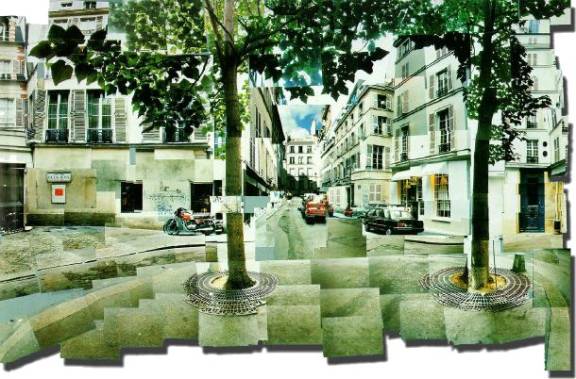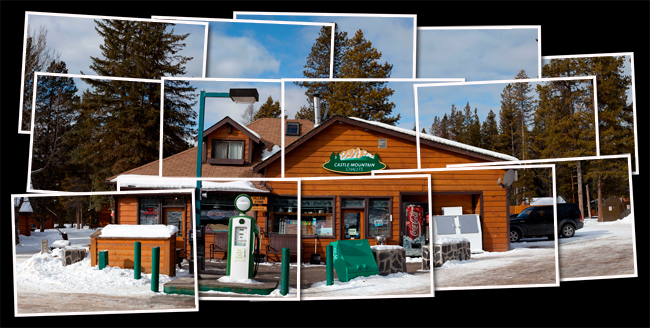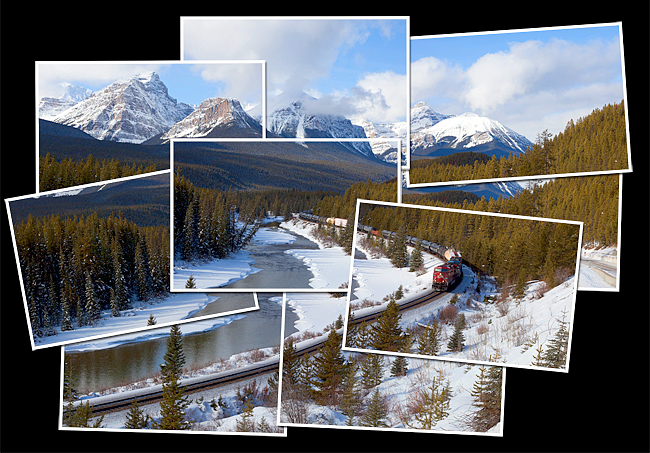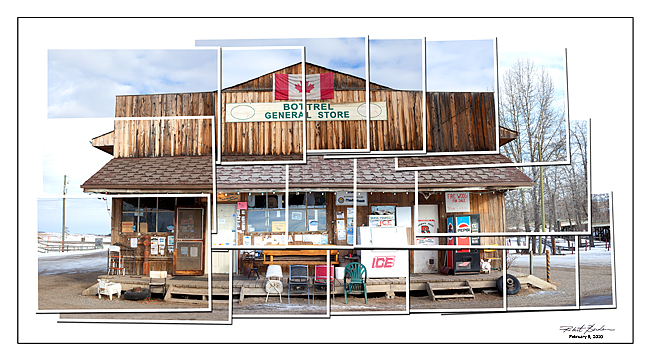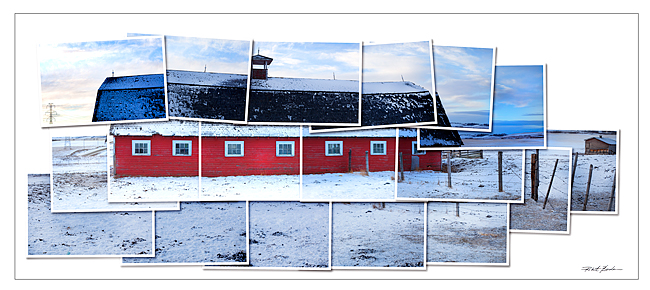
Simulate "David Hockney" Style Photographs Using Photoshop
by Dr. Robert Berdan
David Hockney is a painter and photographer who created a style of photography that involves standing in one place and photographing a scene or object in pieces like a puzzle. The best way to do this is to use a medium focal length lens 50-100 mm, stand in one place, lock the exposure if possible or set the camera to manual so the exposure does not change and photograph the scene. You might start at the bottom left - sweep right then move up and sweep left - and continue until the entire object is captured. Be sure to overlap your images.
Photographed scene by David Hockney composed of many smaller photos
To try this technique you need to find a subject with a strong center of interest and you will need a recent copy of Adobe Photoshop i.e. CS3 or higher.
1. With your camera stand in one place and start photographing your subject. It's important to include only part of the subject in each picture like a puzzle, but try not to miss parts of the scene. Also when you start, try not to shoot more then 20-30 images. Normally I use RAW files and open them up in Adobe Camera RAW as 1.6 Mpixel images so my computer does not run out of memory. Alternatively, if you computer has limited amount of RAM memory you may find it easier to shoot and work with .jpg images for this technique. If you do shoot .jpg files set the white balance and lock the exposure by using manual camera mode or use an exposure lock button. You can use any focal length lens, however I find that about a 100 mm telephoto lens is ideal for most subjects.
2. In photoshop CS3 or CS4 Select File>Automate>Photomerge>Collage and unselect the option Blend images together (we don't want to blend them). Click OK. Photoshop will put all the images onto a transparent canvas in separate layers. You can then adjust the position of the images using the move tool on some layers or delete extra layers if you have too many.
3. Select one of the images and at the bottom of the layers palette select stroke> Select inside> colour white>10 pixels (you can vary the size of the stroke depending on your image size). Then add a drop shadow to the image using FX feature at the bottom of the layers palette.
4. Then apply the stroke and drop shadow to the other layers - Alt-click and drag these effects onto each layer. (this saves time of having to stroke and add a drop shadow to each layer). Note you don't have to add borders and a drop shadow I just like to because it enhances the separation between the images.
5. To add a white background (or any colour background), create a new layer and fill it with white or the colour of your choice and drag this layer to the bottom of the layers palette to create the background.
6. You may want to increase the Canvas size of your image - Select Image>Canvas size and add 1 or more inches, leave the Anchor set to the middle so the canvas increase around all sizes and you are done.
The technique is easy and fun to apply to people, animals and buildings. If you are looking for something different to try the next time you go out to shoot - try a Hockney style photo-collage.
.
Above - Castle Junction Gas Station in Banff National Park
Above - Morants Curve in Banff national Park
Above - General Store in Bottrel Alberta
Photographer and Hoodoo - near Symmons Valley outside Calgary, AB
Red Barn East of Calgary
McDougall Church near Morley, Alberta
Begbie Creek Wateralls in the hockney style
What's Cubism?
In cubist artworks, objects are broken up, analyzed, and re-assembled in an abstracted form—instead of depicting objects from one viewpoint, the artist depicts the subject from a multitude of viewpoints to represent the subject in a greater context. Often the surfaces intersect at seemingly random angles, removing a coherent sense of depth. The background and object planes interpenetrate one another to create the shallow ambiguous space, one of cubism's distinct characteristics.
Related LInks
- Tribute to David Hockney - www.davidhockney.com
- Authorized David Hockney Web site - www.hockneypictures.com
- David Hockney biography at Wikipedia - en.wikipedia.org/wiki/David_Hockney
In the 2001 television programme and book, Secret Knowledge, Hockney posited that the Old Masters used camera obscura techniques, utilized with a concave mirror, which allowed the subject to be projected onto the surface of the painting. Hockney argues that this technique migrated gradually to Italy and most of Europe, and is the reason for the photographic style of painting we see in the Renaissance and later periods of art. This theory has been opposed by the Art Renewal Center who have published several articles attempting to disprove "Secret Knowledge" by means of historical documents and the experiences of living artists who do not use any photography yet have produced photorealistic drawings and paintings.
However, after reading his book, Secret Knowledge, I believe David's hypothesis is sound and worthy of consideration you can learn more here: www.koopfilms.com/hockney and see his book "Secret Knowledge". RB
